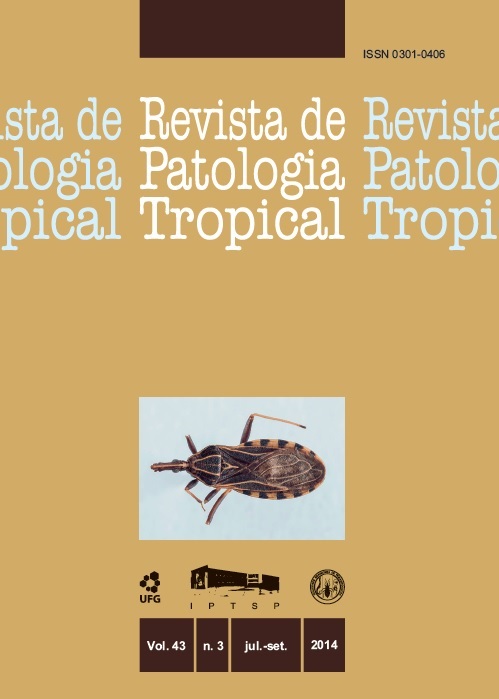RESISTANCE TO HEAVY METALS, ANTIMICROBIAL AND BIOFILM FORMATION IN ESCHERICHIA COLI ISOLATED FROM BEACHES OF SANT LUIS - MARANHÃO
DOI:
https://doi.org/10.5216/rpt.v43i3.32213Keywords:
Coliforms, antibiogram, metals heavy, Public Health, biolfilmsAbstract
The city of São Luís located in the State of Maranhão has inefficient treatment of their effluent, released into the rivers or directly on the beaches. This study evaluated the resistance of 39 strains of E. coli to Cu, Ni, Cd e Hg, their susceptibility to antibiotics and ability of biofilm production. Samples were collected from the beaches of Ponta D'Areia, São Marcos, Calhau and Olho d’Água. The antibiotic susceptibility was performed by disk diffusion method with the following antibiotics: Aztreonam (ATM), Imipenem (IMP), Cephalothin (KF); Ampicillin / Sulbactam (ASB), Gentamicin (CN), Ampicillin (AMP); Cefuroxime Sodium (CXM), Amoxicillin (AML); Piperacillin Tazobactam (TZP), Trimethoprim-sulfamethoxazole (SXT), Amoxicillin + clavulanic acid (AMC). The detection of biofilms production were performed in Congo Red Agar (CRA) and spectrophotometry (ESP). The results showed 2 strains Hg tolerant (1 mM), 9 strains resistant to Cu and Cd (4 mM) and 12 strains resitente to Ni (4 mM). The antibiotic susceptibility tests showed resistance to ATM (15% of samples), for KF (95%), BSA (85%), CN (5%), AMP (87%), CXM (13%), TZP (5%) SXT (74%) and AMC (18%). For the synthesis of biofilm in CRA 20% showed strong production, 36% low and 44% did not produce. By spectrophotometry only 1 (2.5%) proved to be moderate biofilm producer, 5 (12.5%) were classified as non-producers and other 34 (85%) weak produce. The presence of bacteria with antimicrobial and heavy metal resistance profile, and production of biofilms represents a public health risk and direct changes in ecological communities of marine microorganisms.
Downloads
Downloads
Published
How to Cite
Issue
Section
License
The manuscript submission must be accompanied by a letter signed by all authors stating the full name and email address, confirming that the material has not been published or is under consideration for publication elsewhere, and agreeing to transfer copyright in all media and formats for Journal of Tropical Pathology. The authors will not be paid for published articles. They are solely responsible for the content of those articles, even if the Editor holds the right to adjust them to the norms of the journal.
The reviewers will not be paid for the peer review process.

